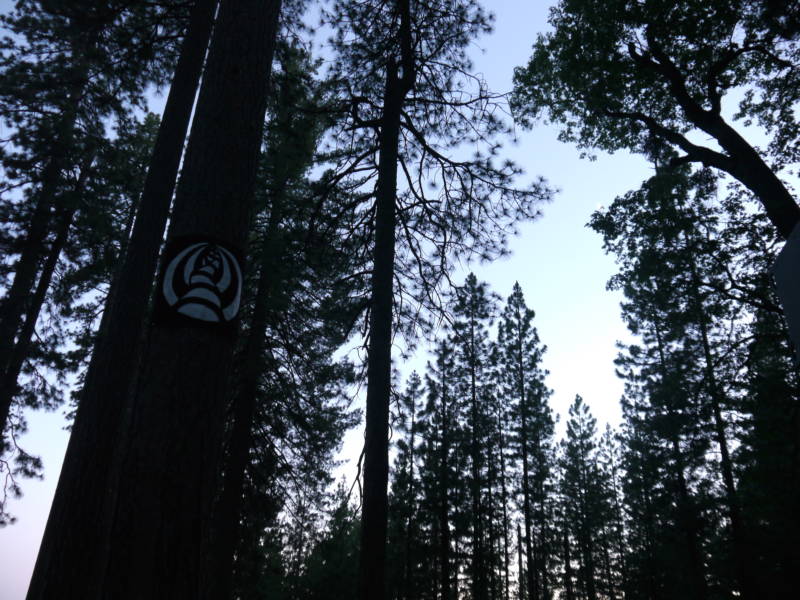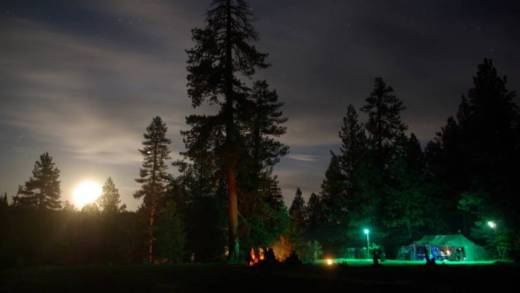That’s where Katabatik comes in. Started in Anchorage, AK, in 2000, Katabatik — the name a riff on katabatic wind, a particular weather phenomenon that occurs in glacial environments — migrated south to Oregon, finally settling in the Bay Area in 2002.
https://soundcloud.com/katabatik/identity-theft-bcnu
“We primarily produced our events outdoors in physically remote places, and that rawness and unfettered experience is central to our ethos. Many of us are fairly uninterested in nightclub culture,” says Buchanan. “And we don’t want to depend on bars as the sole venue for our musical expression. There’s a mutual respect [between organizers and attendees] and an innate power that develops when you successfully operate outside of law and commerce.”
What does this actually mean in practice, you might ask?
Sometime in 2011, I found myself driving solo to a bizarre location in East Oakland, which I would later learn was called “Mr. Floppy’s Flophouse.” Despite the weird majesty of the venue itself — a maze of warrens, attics, basements, and sub-basements — Katabatik’s motley crew of DJs, live electronic musicians, and performance artists left an indelible imprint on me. Equal parts beautiful, harsh, and bizarre, the music sounded simultaneously familiar and unlike anything else I had ever heard.
To top it all off, a cavalcade of robed, masked performers enacted a midnight ritual to celebrate the equinox. I left feeling like I had discovered a world I always knew existed, but had never known how to find.
https://soundcloud.com/katabatik/scarford-cry-baby
Afterward, things proceeded apace, with Katabatik hosting sporadic out-of-bounds events and occasionally releasing their artists’ productions online. That is, until the fire that devastated the Ghost Ship warehouse on Dec. 2, 2016, killing 36 people — including sound engineer Barrett Clark, visual artist Jonathan Bernbaum, and musician Joey Casio, all members of the Katabatik community.
“I met Barrett in 2001, when his group POLAR played on the Katabatik rig,” recounts Buchanan. “Right away we realized his mastery of electronic music, even at an early age. Gradually, as he shifted towards live sound engineering, he became the de facto sound man for Katabatik, and was amazing at it. His career [as an engineer] really took off, but he always remained completely loyal to Katabatik and prioritized our winter and summer solstice events.”
Clark was not only one of Katabatik’s most prolific artists; he was instrumental in making their events sound as good as possible.
“Barrett was relentless — an irreplaceable human being,” Buchanan says. “Losing him and Jonathan, our main visual artist, was a huge blow, on a personal and a collective level. We’re an extremely tightly knit group, and there weren’t that many of us to begin with.”
Still grieving and processing, Buchanan is determined to do justice to Katabatik’s legacy, even if it means diminishing the group’s mystique. “We have a very real ‘thing’ that has grown organically over the years, and deserves an outlet into the greater spheres of public perception,” he says. “There is a huge body of work that has more or less been hidden in our archives for years — but there are also new works being created [by our artists] that possess the same vibrant energy.”
https://soundcloud.com/xanopticon/thee-source-none-shall-pass-xanopticon-rmx
And so Buchanan, and Katabatik, look ahead.
“For years, Barrett and I had discussed actualizing our vision for a record label,” he remembers. “Our plans were underway, but the fire made it painfully clear that our old ways of simply throwing endless underground parties were over, and that releasing our music to a wider audience was crucial,” he says.
“It’s a way to establish in a less ephemeral way the basis for our creative praxis,” he says, “and a way for us to move forward.”

Learn more about Katabatik on their website or Bandcamp, which collects their digital releases. Live recordings from past Katabatik events are available via Soundcloud.




